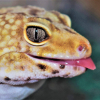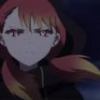Hello everybody,
I'm new to this forum and I'm new in ant keeping in general. This year i caught lots of queens, and i was able to ID at least the genus. I caught a lots of lasius queens, few different camponotus sp and one formica queen, but today i caught something i have never seen before. I live in a small town Virovitica in Croatia, Europe, and i caught this queen on 28.6. She looks like semi claustral queen, but only semi claustrial queen that i know of (in Europe) is Myrmica rubra, and she doesn't look like that. She is one centimeter long, brown and has that extra body part in between her abdomen and mesosoma, i believe it is called petiole/postpetiole? Please help as soon as you can, Thanks!
- Formiculture.com
- Forums
- Gallery
- Members
- Member Map
- Chat















